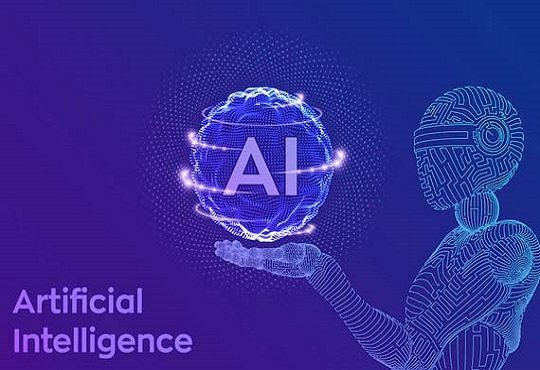How to Reskill The Workforce for Artificial Intelligence
Shivani, Content Writer | Monday, 14 November 2022, 11:35 IST
 The workforce continues to be dominated by AI. Thus, hiring practices or valued skills must also change quickly. But colleges and universities aren't preparing current students adequately for the modern workforce due to a lack of training for technical skills or inadequate instruction in soft skills within higher education. How can companies then intervene to assist their newest hires in upskilling or reskilling so they can succeed in their initial professional positions?
The workforce continues to be dominated by AI. Thus, hiring practices or valued skills must also change quickly. But colleges and universities aren't preparing current students adequately for the modern workforce due to a lack of training for technical skills or inadequate instruction in soft skills within higher education. How can companies then intervene to assist their newest hires in upskilling or reskilling so they can succeed in their initial professional positions?
To better meet customer and employee demands, companies should consider reskilling their workforce in four ways, according to Ian Cook, VP of People Analytics, Visier. He also discusses how businesses can stay ahead of the reskilling curve.
With millions of jobs set to be replaced by artificial intelligence, numerous companies will soon be confronted with a skills vacuum in their workforce. Organizations could use educational programmers to upskill staff members for new positions, but their success depends on a data-driven strategy.
By examining prior significant economic transitions, we can observe that people prefer to evolve in the way they do best when faced with new technologies. The transition from hunters and gatherers to farmers, manufacturing employees, and some skilled labor. Modern technology is always what propels these changes and developments.
HR Must Take the Lead
Preparation is the key to pivoting. Imagine that your company waits to fill a new position until it is necessary. The likelihood is that it will be difficult to identify qualified individuals in the situation. HR will be under a lot of pressure to fill these positions. However, there is no need to waste time and money on finding new talent when retaining current employees is frequently more straightforward and practical and results in higher retention and employee engagement.
However, creating a reskilling program necessitates a data-driven approach to avoid spending money on ineffective training programmes and personnel. To create a learning program that will help your business and its employees succeed, follow these steps:
Align The Organisation’s Objectives and The People
Ideally, your company has strategic goals for deploying new tools rather than just following the technology trend. Such corporate purposes should guide your decision on the people's ability to emphasize going ahead. For instance, let's say your company wants to offer. It gives clients a more smooth digital ordering process. If so, you might retrain your sales representatives to conduct customer service, including technical support.
Create a Pipeline for The Talent Pool
Consider collaborating with educational institutions to ensure a steady flow of new talent as workers organically age out of the workforce or experience natural turnover. The curriculum is not changing quickly enough to prepare students for the workforce. You'll establish beneficial relationships with future employees with the abilities required at your business from day one by taking an active part in their education.
Implement and Modify Training
You must continuously examine and optimize your learning program to succeed. Determine essential measures, such as time to productivity, to monitor progress. Don't be scared to test different training programs and contrast their success rates. Similarly, your training objectives must vary as your business goals do.
Determine Where The Gap Lies
To identify skills gaps in your current workforce, you must first link your people's ambitions with your business goals. Who has the necessary expertise already? Who might receive training to fill the gaps when you lack essential skills? Utilize data analysis technologies to determine which employees are most likely to depart and which would benefit from retraining to avoid wasting time and money.
But if history has taught us anything, it's that people constantly change. Employing data-driven HR strategies that bridge talent shortages as they grow into significant ones can help companies accelerate this development.
Benefits of Using AI in the Workplace
Although there is no universally recognized definition of AI, it generally describes a computer system that can learn or function independently while generating choices based on data. This implies that AI can mimic human intelligence and, in certain situations, even outperform it. AI is now being used by enterprises to increase productivity and lighten burdens. It helps with sophisticated problem-solving as well as bringing original solutions.
There are many Artificial Intelligence courses in India. They have a variety of advantages in the workplace. Great Learning provides you the best Artificial Intelligence courses which will empower you with the expertise and abilities you need to keep up with this fast-evolving area
Among these advantages are:
Better Decision-Making
Artificial Intelligence courses in India can assist workers in making better decisions by giving them access to data more quickly and accurately than humans can. With the use of AI, complex data sets may be transformed into insightful understandings which can spot changing customer behaviour, patterns and trends, and much more.
Less Work To Do
Employees have more time to focus on other activities because AI is handling some of the labor. Chatbots are one of its example. AI-powered chatbots are utilized to provide clients with quick and efficient customer service. The manual effort has been decreased thanks to chatbots, from collecting information to complaint filing. Automated tasks can handle monotonous work so that employees are clear on their essential responsibilities.
Improved Effectiveness
By automating jobs that a computer can execute more quickly and precisely, AI can increase staff productivity. Additionally, it reduces the likelihood of mistakes in the workplace. By completing an MTech in artificial intelligence, employee productivity can increase. This is also because they have access to tools to automate chores and make suggestions for improving their job.
AI's Impact on the Workforce
According to a report in the Economist, in the recruitment and compensation of employees, AI will help eliminate both unconscious and conscious stereotypes. Additionally, it highlights how the use of AI in the workplace will benefit workers in other ways, such as ensuring that the proper safety equipment is used through the use of smart scanning technology.
Wrapping Up
A new initiative to create computational models of intelligence with the help of a MTech in artificial intelligence is centered on the concept of AI. Great Learning courses are an excellent place to start, whether you want to pursue a profession in AI or are just interested in keeping up with the most recent advancements. The fundamental premise is that any form of Intelligence, whether human or nonhuman, may be expressed in symbol structures, including symbolic operations coded in a digital computer.




